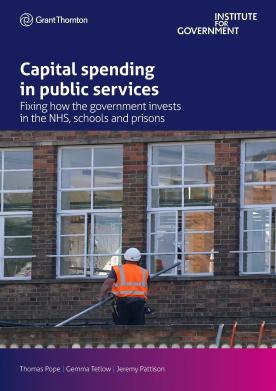Capital spending in public services: Fixing how the government invests in the NHS, schools and prisons
Crumbling schools, hospitals and prisons need a new capital spending plan to turn performance around.

Capital spending in public services
Crumbling buildings, creaking IT and a lack of equipment will continue to seriously hamper public service performance unless the next government takes a new approach to capital spending.
Download